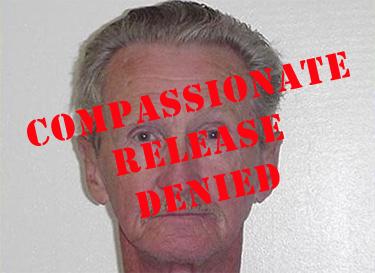 Pat Nolan’s Justice Fellowship is part of the Prison Fellowship organization created by the late Charles Colson. They are concerned with issues such as:
Pat Nolan’s Justice Fellowship is part of the Prison Fellowship organization created by the late Charles Colson. They are concerned with issues such as:
- Prison Rape
- Prisoner Reentry
- Religion Behind Bars
- Solitary Confinement
The Justice Fellowship is also concerned about Compassionate Release, an issue that will be familiar to readers of the Friends of Justice blog. Over the years we have told the story of people like Donna Stites, a brittle diabetic in the Indiana prison system who is also an Associate of the Sisters of Providence. And you will also remember Ramsey Muniz, a leader of La Raza Unida in the 1970s who twice ran for Texas Governor. Following a hip injury, Ramsey, who just turned 70, is hardly able to walk without assistance. We believe Mr. Muniz is innocent of the charges that placed him in prison but, that issue aside, the twenty years he has served in prison is more than a sufficient penalty for any non-violent crime.
Both Ramsey and Donna are devout Roman Catholics who could be making significant contributions in the free world. But, at both the state and national levels, compassionate release is very rare. Please read Pat Nolan’s comments and click on some of the links at the end of the article. It is encouraging to see political conservatives and liberals cooperating in support of a shared cause. AGB
Why is the BOP So Stingy with Compassionate Release?
12/19/2012
Dear Friends,
When a federal prisoner faces imminent death or serious incapacitation, Congress has given courts the authority to grant early release – so-called “compassionate release.” However, the inmate cannot request such an order directly; the Bureau of Prisons (BOP) must file the motion.
And that is where the system breaks down. Congress intended for the BOP to act as a gatekeeper to weed out frivolous inmate requests. They never intended that the BOP would be the decision maker. However, the BOP has arrogated that function to themselves, and the answer is almost always “No.” The numbers tell the tale: Since 1992 the BOP has forwarded an average of only 24 compassionate release requests per year to the courts.
Assuming that only one percent of the inmates would qualify (which is a very low estimate considering that geriatric patients are one of the fastest growing cohorts of inmates), that means of the 1,280 inmates eligible only 1.9 percent were deemed worthy of sending to the courts. These numbers, and the impact of the lives of the prisoners who are denied this compassion, are chronicled in The Answer is No: Too Little Compassionate Release in U.S. Federal Prisons which was produced by Human Rights Watch and Families Against Mandatory Minimums.
There are practical grounds why this stinginess in granting compassionate release is folly. The report argues that such releases “… would free the BOP from the unnecessary security costs of confining prisoners who pose scant risk of harm to anyone and from their medical costs. The per capita cost of caring for a prisoner in one of the BOP’s medical centers was $40,760 in FY 2010, compared to an overall per capita cost of $25,627. Releasing prisoners who are not suffering from grave medical conditions but who face other compelling circumstances—such as those whose children are destined for the foster care system or who are desperately needed at home to care for dying family members—would advance other important societal goals, such as preservation of the family.”
The morality of the BOP policy is even more off kilter. The report states, “a criminal justice system that respects human rights does not only ensure accountability for those who commit crimes. It also ensures that sanctions are proportionate to the crime and further the goals of punishment. A prison sentence that constituted a just and proportionate punishment at the time it was imposed may become disproportionately severe in light of changed circumstances, such as grave illness. Keeping a prisoner behind bars when it no longer meaningfully serves any legitimate purpose cannot be squared with human dignity and may be cruel as well as senseless.”
The report makes several excellent suggestions for changes in this policy. Use of compassionate release has strong support on both the Left and the Right. Former Attorney General Ed Meese sponsored a day-long conference on this subject at the Heritage Foundation several years ago.
I urge our readers to read this informative report and tell your public officials that these policies should be changed.
In His Service,
Pat Nolan
President, Justice Fellowship
Resources
VIDEO: The Broken Promise of Compassionate Release(Steve Sady, July 9, 2012)
- Justice Fellowship Resource Page on Prison Health Care
- The Answer Is No: Too Little Compassionate Release in U.S. Federal Prisons (Human Rights Watch, November 30, 2012)
- Frequently-Asked Questions on Compassionate Release(Families Against Mandatory Minimums)
- Press Release: Prison Officials Thwart Compassionate Release (Families Against Mandatory Minimums, November 30, 2012)
